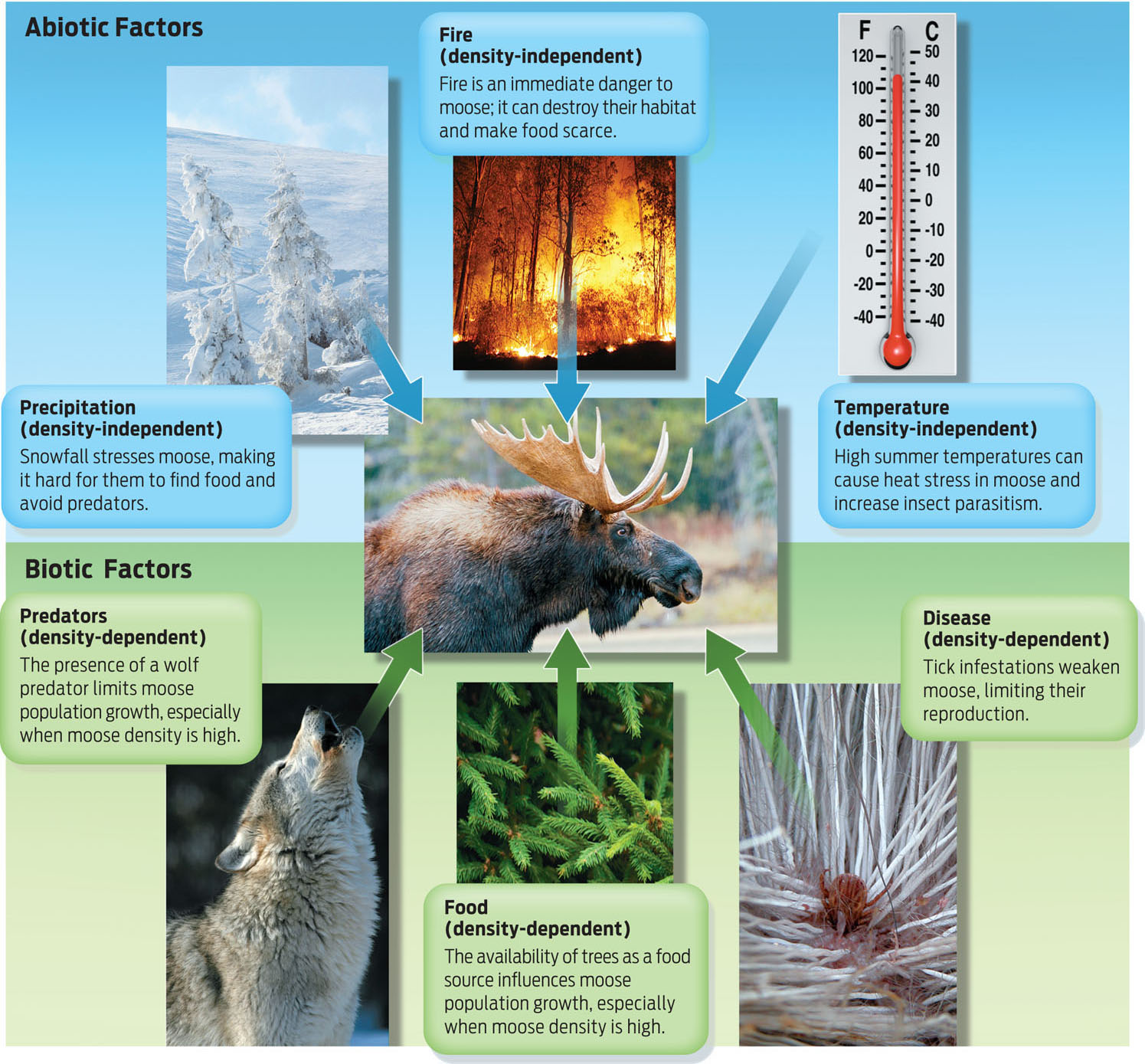TOO CLOSE FOR COMFORT?
POPULATION DENSITY The number of organisms per unit area.
Moose are formidable foes of their wolf predators. At 900 pounds, 10 times the weight of a wolf, an adult moose can successfully defend itself against an aggressive pack of wolves with its powerful front legs. For that reason, wolves often attack older and weaker or young moose. They typically target the nose and hindquarters, where they bite and latch onto the flesh like a steel trap. When enough wolves are attached, their collective weight brings down the moose, and the feeding begins.
DENSITY-DEPENDENT FACTOR A factor whose influence on population size and growth depends on the number and crowding of individuals in the population (for example, predation).
A number of factors can influence the likelihood that wolves will kill moose. One of the simplest is population density, the number of organisms per unit area. Because the total area of Isle Royale stays the same, as the size of the moose population increases so does its density. At high population density, moose are easier for wolves to locate and kill. Further, when the moose population is at high density, food scarcity can also be a problem, leaving moose hungry and weak and therefore more vulnerable to attack.
BIOTIC Refers to the living components of an environment.
Because wolf predation and plant abundance have a greater effect on moose when the moose population is large, these are examples of density-dependent factors—factors that exert different degrees of influence depending on the density of the population. As living parts of the environment, they are also examples of biotic factors influencing growth.
DENSITY-INDEPENDENT FACTOR A factor that can influence population size and growth regardless of the numbers and crowding within a population (for example, weather).
Some environmental pressures take a toll on a population no matter how large or how small it is. In an exceptionally cold winter with deep snow, for example, moose can die of cold or starvation. The weather can also weaken them so they are easier to hunt and kill. Since cold weather affects moose regardless of population size, it is considered a density-independent factor: whether there are 10 moose or 1,000, a harsh winter affects them all.
ABIOTIC Refers to the nonliving components of an environment, such as temperature and precipitation.
459
Wolves are also affected by density-independent factors. “A mild winter is always tough on the wolves,” says Peterson, who notes that moose can more easily escape wolves when snow cover is light. Density-independent factors like snowfall can be considered nature’s form of bad luck. Most density-independent factors are abiotic and include things like temperature, precipitation, and fire (INFOGRAPHIC 21.8) .
Both nonliving (abiotic) and living (biotic) environmental factors influence the size and growth of populations.

460